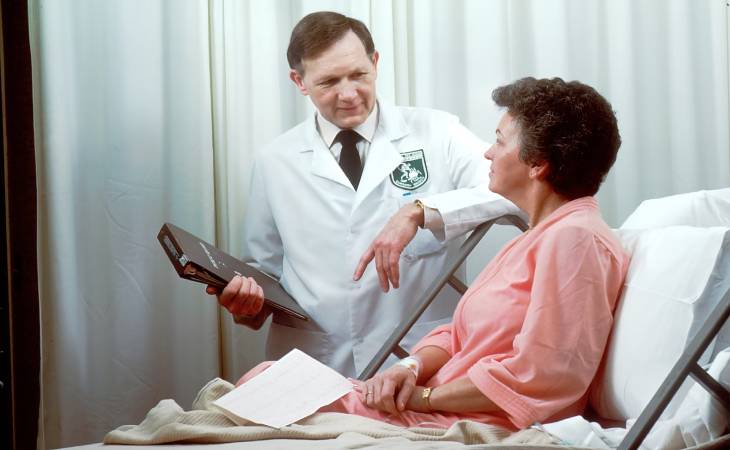Table of Contents
Introduction
An ambulatory medical record, an outpatient medical record, is an all-inclusive documentation of a patient’s health information and medical history in the context of ambulatory care. Additionally, it refers to healthcare services provided on an outpatient source, where patients do not require admittance to a hospital or any other inpatient facility.
Features of Ambulatory Medical Record:
Key features of of this record comprise of the following:
- Patient Demographics: Basic information about the patient, including name, DoB, contact details, and other identifying information.
- Medical History: An overview of the patient’s past and present medical conditions, surgeries, allergies, medications, and immunizations.
- Diagnostic Information: Results of diagnostic tests, laboratory work, imaging studies, and other procedures conducted in an outpatient setting.
- Treatment Plans: Details about the treatment plans, medications prescribed, and any procedures performed during outpatient visits.
- Progress Notes: Notes made by healthcare providers during each visit, summarizing the patient’s current health status, symptoms, and any changes to the treatment plan.
- Care Coordination: Information about referrals to specialists, consultations, and any care coordination with other healthcare professionals.
- Vital Signs and Measurements: Recording of vital signs like blood pressure, heart rate, respiratory rate, and other relevant measurements taken during outpatient visits.
- Patient Education: Document any educational materials provided to the patient, along with instructions and advice for managing their health outside the healthcare facility.
Types of Ambulatory Medical Record:
Several types of AMR systems exist, each with its own features and functionalities. Some common types include:
- Cloud-based AMRs: These systems are accommodated in the cloud and are accessible from any device having an internet connection.
- On-premise AMRs: These are installed and operated on a local server within a healthcare provider’s office.
- Specialty-specific AMRs: These AMRs are designed for specific medical specialties, such as oncology or cardiology.
Benefits of Ambulatory Medical Record:
- Improved Accessibility and Portability:
This accessibility promotes efficient care coordination and facilitates the seamless transfer of patient data across different healthcare settings, improving overall continuity of care.
- Enhanced Patient Safety and Quality of Care:
Such contributes to accurate diagnoses and treatment plans, ultimately improving patient safety and the general quality of care delivered in outpatient settings.
- Increased Efficiency and Time Savings:
Such efficiency allows healthcare providers to spend more time with patients, focusing on direct care and communication rather than dealing with cumbersome paperwork. It can also lead to quicker decision-making and more timely interventions.
- Facilitated Communication and Care Coordination:
AMR facilitates care coordination, especially in cases involving multiple specialists or when patients receive care from different healthcare facilities. The seamless exchange of information contributes to a more collaborative and integrated approach to healthcare.
- Data Analysis for Research and Population Health Management:
Analyzing trends and patterns in patient data can help identify public health issues, improve preventive care strategies, and contribute to advancements in medical research. This data-driven approach supports evidence-based practices and enhances healthcare outcomes on a broader scale.
Challenges of Using Ambulatory Medical Record:
- Privacy and security concerns: Robust measures must be in place to protect patient privacy & safeguard the security of their medical data.
- Interoperability issues: Different AMR systems may not be compatible, making it difficult to share information between healthcare providers.
- User adoption: Healthcare providers and staff may require training and support to adopt and use AMRs effectively.
The Future of Ambulatory Medical Record:
AMRs are anticipated to play a progressive role in healthcare as technology evolves. Future trends include:
- AI is used to analyze medical data and provide insights to healthcare providers.
- Data from wearable devices can be integrated with AMRs to provide a more comprehensive picture of a patient’s health.
- Improved interoperability standards will make sharing information between different AMR systems easier.
Conclusion:
In conclusion, ambulatory medical records, mostly in electronic health record systems, considerably improve healthcare delivery. With greater accessibility, efficient communication, and improved patient safety, these records promote efficient care coordination and authorize healthcare providers with comprehensive patient information.
The improved efficiency in documentation allows for more focused and timely patient care, positively impacting overall healthcare quality. Additionally, the data collected eases research and population health management, contributing to evidence-based practices.
These records play a pivotal role in modern healthcare, endorsing continuity of care, reducing errors, and ultimately enhancing the well-being of patients in outpatient settings.

